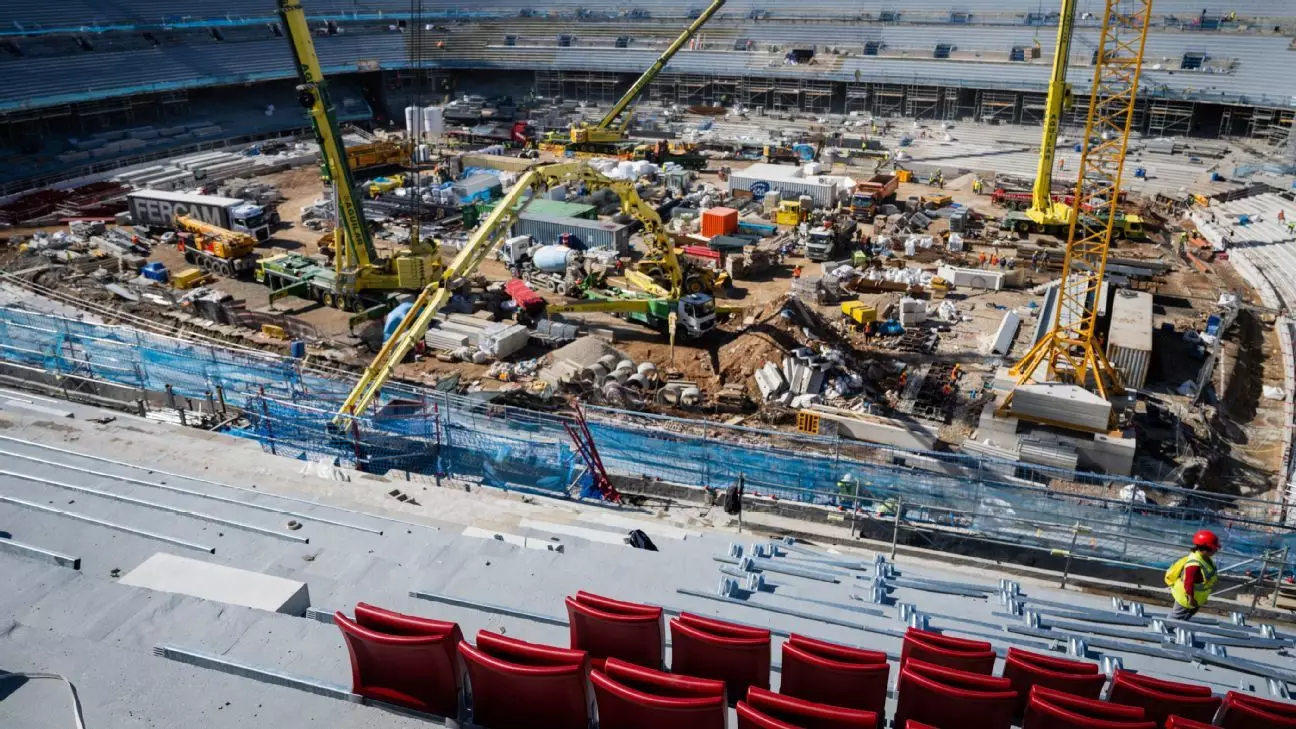FC Barcelona’s ambitious renovation project of the iconic Spotify Camp Nou has hit significant roadblocks, compelling the reigning giants of La Liga to remain at the Olympic Stadium until at least May. The club’s announcement has significant ramifications not just for the players but for fans and the overall aura surrounding one of football’s most celebrated venues. Originally eyeing a phased return during their 125th anniversary in November, optimism has been tempered as logistical and structural complexities unveil themselves. The club’s inability to return to their home turf highlights the challenges associated with large-scale construction projects, exemplifying a clash between ambition and reality.
Challenges of the Renovation Process
The delays in the renovation stem primarily from unanticipated issues with the stadium’s second tier, where more work was necessary than initially estimated. Such complications often arise in projects of this magnitude, yet they reveal a certain level of vulnerability in planning and execution. As the club embraces modernity, the operational snags serve as a reminder of the intricate balance between tradition and modernization in sport. Furthermore, the pitch installation—critical for maintaining high standards of elite football—is another hurdle, with sources indicating that this process may take up to three months, capping the immediate prospects for returning home.
Playing at the Olympic Stadium since the renovation’s commencement has brought forth both unique challenges and opportunities. The switch to a temporary venue alters the dynamics of home advantage, likely affecting team morale and fan engagement. Nevertheless, the Olympic Stadium itself has a storied history, and its hosting of Barcelona’s matches allows a semblance of continuity amid the upheaval. While matches against formidable opponents like Real Madrid and Villarreal loom on the horizon, the prospect of an empty Camp Nou remains heavy in the hearts of supporters who crave the atmosphere, history, and tradition that only their true home can provide.
Barcelona’s return to the Camp Nou promises to be a transformative moment. With discussions about capping attendance to around 60,000, the club will adopt a staggered approach towards reclaiming its legacy. As the grand re-opening approaches, fans are left to speculate about the anticipated upgrades and enhancements that would complement the return. Plans are in place for stadium completion by summer 2026, with a final capacity projected to reach approximately 105,000, positioning it as one of the largest and most modern venues in Europe.
Despite the setbacks, FC Barcelona must inhabit a space of resilience. The renovation of the Camp Nou is not merely about bricks and mortar; it symbolizes a new chapter for the club—one that embraces the future while honoring its rich past. The evolved desired capacity and improved facilities will ultimately herald a new era for fans and players alike. Until then, the embers of anticipation continue to burn brightly, with hopes high that the tantalizing vision of Camp Nou’s rebirth will soon become a reality.

Leave a Reply